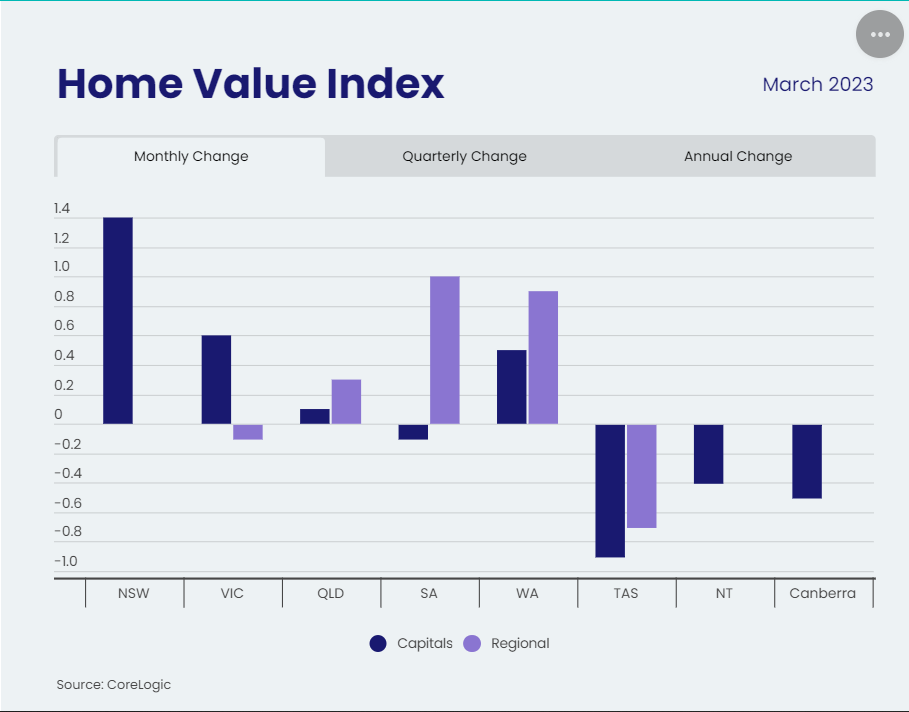Demand for property to continue to outstrip supply
The CoreLogic Home Value Index report and the National Housing Finance and Investment Corporation’s (NHFIC), State of the Nation’s Housing report both suggest that demand for housing is likely to continue to outstrip supply.
According to the CoreLogic report, dwelling values have seen their first month-on-month rise of 0.6% in March, the first time since April 2022. Suggesting the market is starting to recover from the impacts of the COVID-19 pandemic, and that demand for housing remains robust.
The report shows that Sydney and Melbourne experienced the strongest price growth in capital cities in the past month, with dwelling values rising by 1.4% and 0.6%, respectively. However, this lift is not consistent across the capital cities, with Hobart, Canberra, Darwin and Adelaide, all recording a decline.


Image source: (VIEW LINK)
Mirroring these findings, the NHFIC report shows demand for housing continues to be strong, particularly in major capital cities such as Sydney and Melbourne where housing supply has struggled to keep pace with demand.
The NHFIC report highlights that demand for housing has been driven by a range of factors including population growth, low-interest rates, and government policies such as the First Home Loan Deposit Scheme.
The reopening of borders has led to a stronger than anticipated recovery, with the Centre for Population predicting net overseas migration will increase by 268,000 between 2022 and 2024 and could be considerably higher. As more people move into cities and other urban areas, the demand for housing is likely to rise. This will place continued pressure on the supply pipeline of affordable housing and in turn, lead to increased competition and property prices.
As seen in both reports, Australia’s housing demand is strong; however supply is undoubtedly struggling to keep pace. In 2022, the construction industry felt the brunt of supply chain issues, with approximately 28,000 dwellings delayed. The industry continues to recover from the severe weather events of recent years and continues to feel the impacts of labour and material shortages. It comes as no surprise that the NHFIC report estimated a shortfall of more than 100,000 dwellings over the next 5 years, to 2027.
These structural characteristics of the Australian property market have far reaching implications. For those saving to enter the market currently, it will certainly be more challenging than any time in recent memory. For investors, the outlook is more positive, with supportive tailwinds on potential price appreciation for prospective property owners; and for those investors in the debt stack of these property transactions, the risk-adjusted return on offer can appear equally, if not more, compelling.
https://www.nhfic.gov.au/media/nhfic-releases-flagship-state-nations-housing-2022-23-research-report
1 topic
